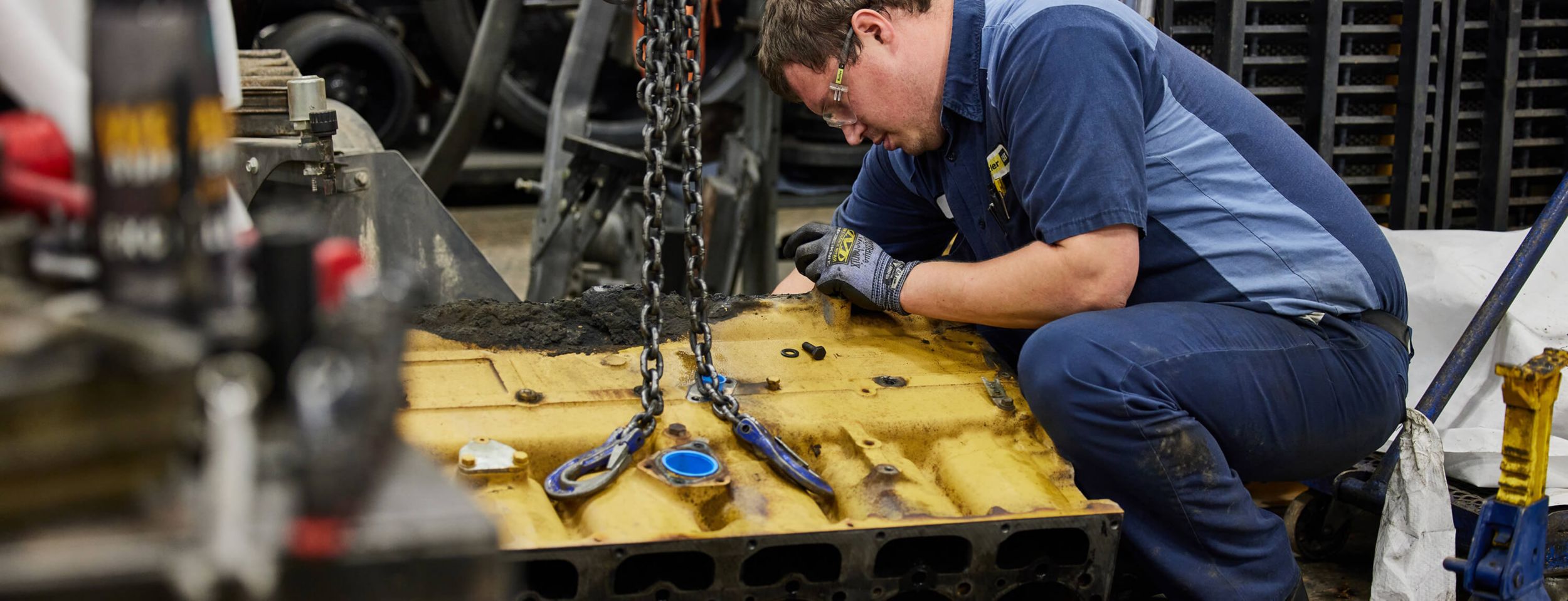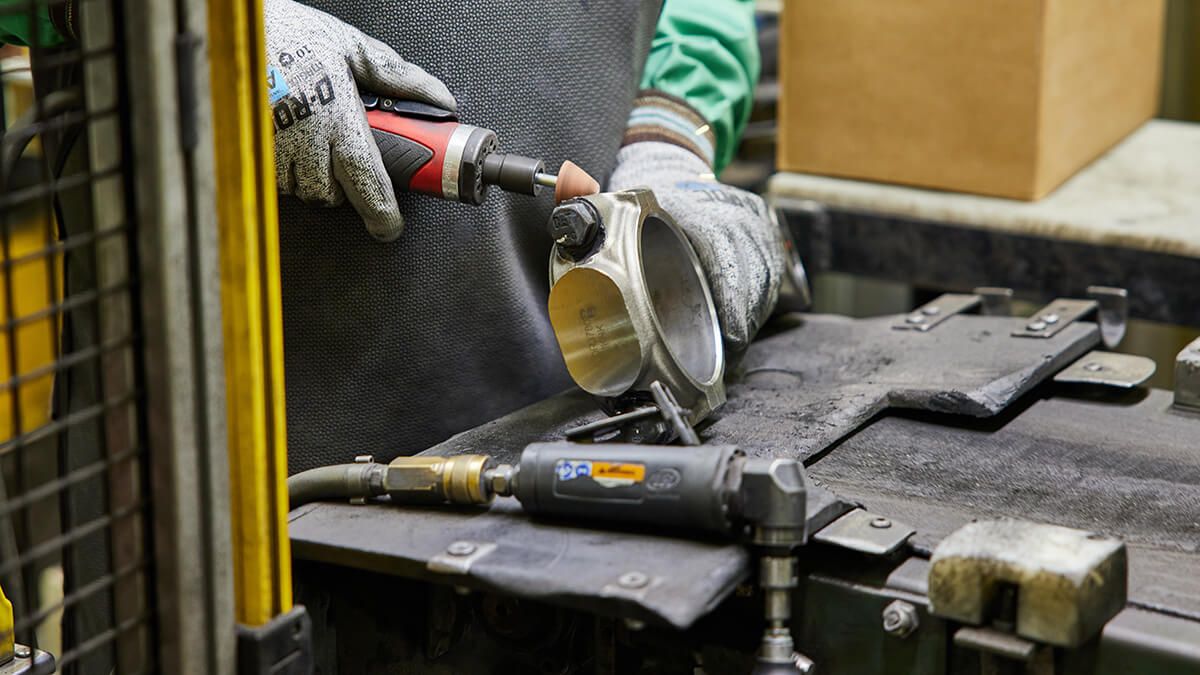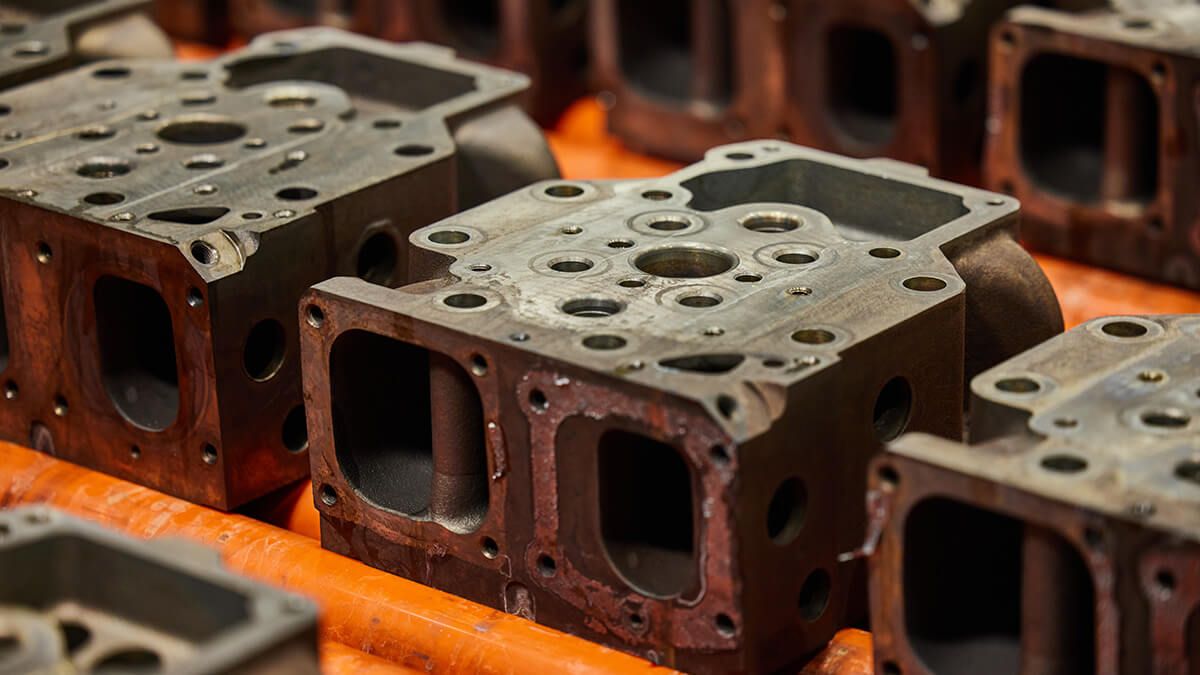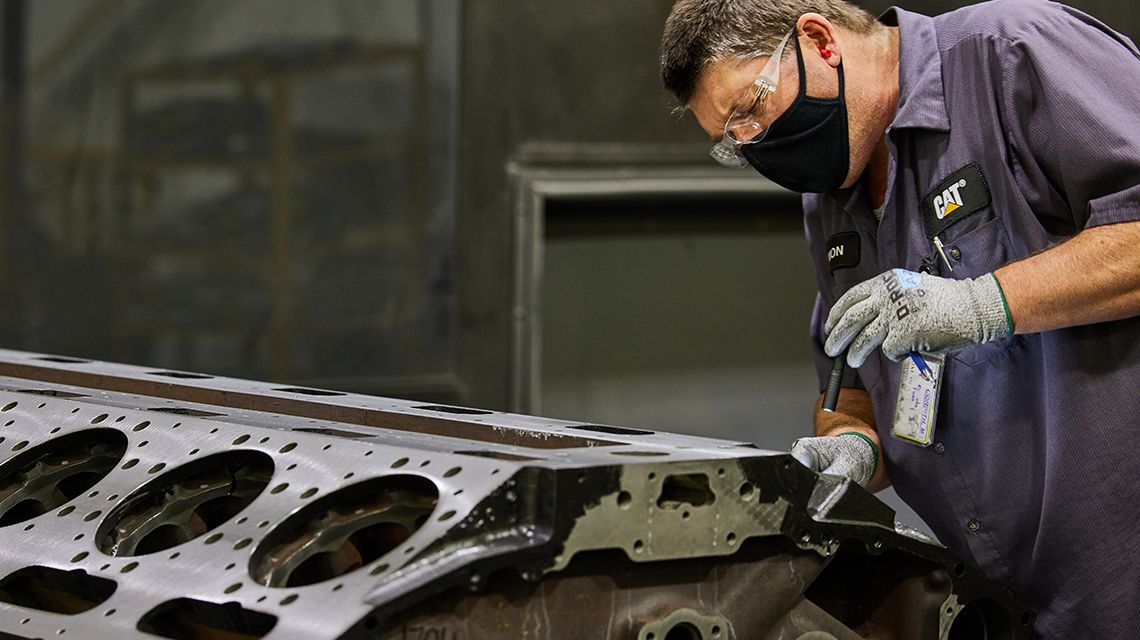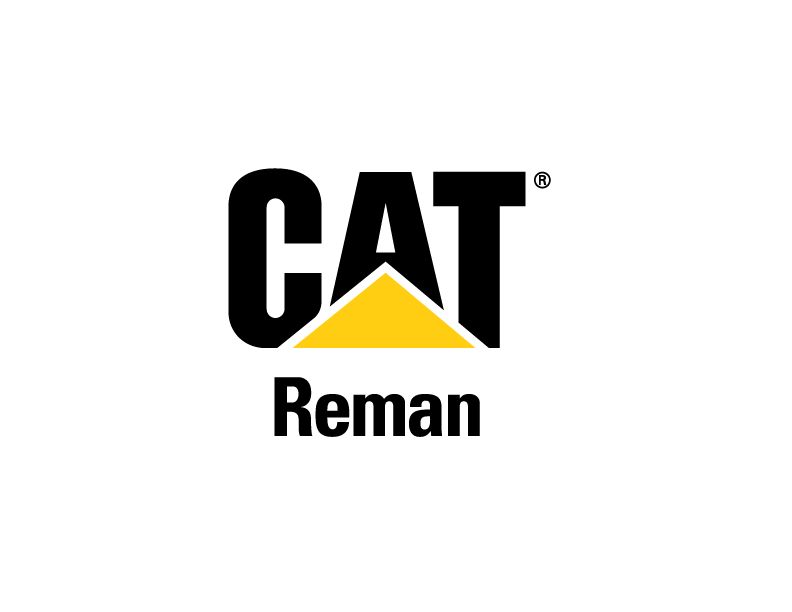

Sign In
Welcome! Sign In to personalize your Cat.com experience
If you already have an existing account with another Cat App, you can use the same account to sign in here
Register Now
One Account. All of Cat.
Your Caterpillar account is the single account you use to log in to select services and applications we offer. Shop for parts and machines online, manage your fleet, go mobile, and more.
Account Information
Site Settings
Security
Engine Remanufacturing: Evaluation and Decision Phase
Complete disassembly and parts-specific cleaning techniques set Cat® Reman technicians up for the thorough inspection of used engines. Their precision means they can determine which components need a light touch, which need machining back to Caterpillar performance specifications and which must be replaced.
Estimated read time: 3 minutes
After your dealer inspects your engine to determine whether it meets core criteria, it is sent to the Cat® Reman engineering team in Corinth, Mississippi, or another one of Caterpillar's global core processing facilities.
There, it is cleaned and completely disassembled so technicians can get a detailed look at all the parts and begin the evaluation process. To read about precleaning and disassembly, check out our previous article in this series. Now, let’s take a look at cleaning, reclaiming and salvaging.
STEP FOUR: CLEAN & RECLAIM
Megan Pace, team lead for engine, cranks and blocks (ECB) and ECB reclaim, explains that an additional full clean is an essential step for these disassembled parts. “You can't tell if it's good or not until after it's clean, and that's where our inspectors come in. We have inspectors in reclaim after the cleaning process.”
Each part is cleaned with a media specific to the base-part materials and application requirements. After a final wash, inspectors get to work.
“It's a little bit of detective work. If I find cracks in specific areas of a component, we submit the part to salvage technicians to apply approved salvage processes to remanufacture the part. If it turns out a process does not exist to salvage the feature in question, we submit the idea to our engineering teams to be reviewed for future repair,” Pace says.

STEP FIVE: SALVAGE
Engineering Team Lead Kegan Luick gives some insight into what salvaging means. “We are usually talking about individual piece parts. From those individual parts, we then build that product back up to Caterpillar performance specifications.”
Parts with tight tolerances — like blocks, cranks, cams and heads — usually go to machining, says Manufacturing Engineer Joshua Brooks.
And with technology, the facility can do specific repairs that require tight tolerances and process control. “Cat Reman uses many cutting-edge metal deposition technologies, including laser cladding, bore spray, twin wire arc spray and several others. We custom develop capabilities that are tailored to specific applications,” Luick says.
Once ready, every part goes through a final wash and inspection. Renea Miller, a section manager of core receiving and inspection, says it’s either stored in the warehouse or it goes straight to assembly.

To read more about the next steps in the process, see part 3 of this series.
Check out the range and variety of available Cat Reman parts.
